Acquire knowledge about different substrates and screening techniques in order to achieve optimal efficiency in electronic systems. Overview the basic characteristics of most PCB and substrate materials, for example, FR-4, flexible substrates, and metal-lined substrates, and know how to select the perfect material for your particular project. Know how to choose materials for a PCB safely and confidently by drawing on your understanding of dielectric conductivity, thermal conductivity and other factors that are crucial for circuits functionality. This guide reflects that no matter how long you have been practicing engineering or how new a designer you are, it will be a one-stop center for all your design needs, giving you the ability to make wise decisions to release your full design potential.
What is a Printed Circuit Board Material?
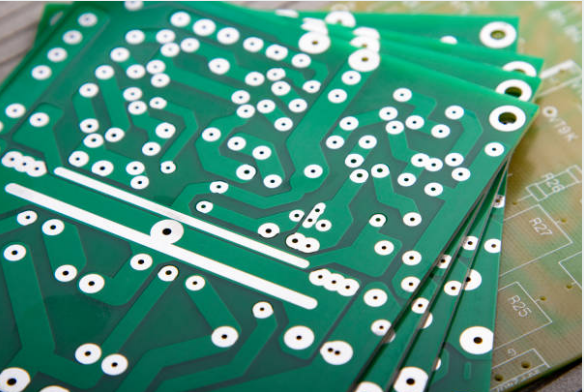
PCB material is the main base that all the devices and components electrically continuous are inserted on to create the complete functioning circuit. Substrate materials of circuit boards are a staple of construction for basically any electronic device on the market, starting from the simplest ones and ending at the most advanced systems, including desktop computers and modern smartphones. Different materials matter and can often be found in the following varieties:. Each may be meant for a variety of uses so this makes one unique from the others.
COMMON PCB MATERIALS
Substrates from the PCB (printed circuit board) frequently consist of the common materials identified in electrical circuitry construction. Such elements significantly affect the connection management, mechanical and heat conductivity of the circuit board.
FR-4
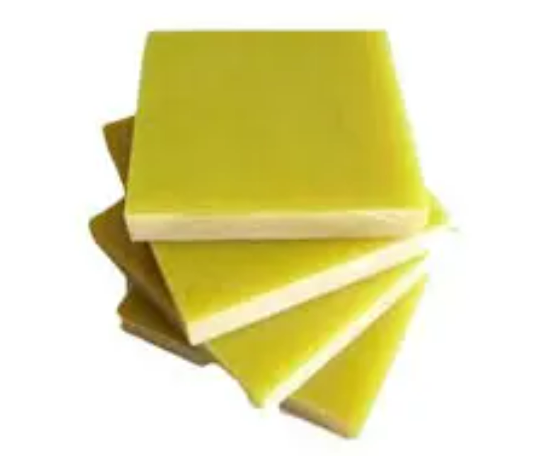
FR-4 is a code for fibre-reinforced glass-reinforced epoxy boards manufactured during PCB fabrication with a non-combustible grade. PCB board is among the most common industries where the material is utilized for PCB substrate fabrication. The “FR” symbol means fire or flame retardant; therefore, the material has inhibiting features against fire spread. With “4”, the grade FR-4 is one of the many types of PCB grade available in the market and that one of the advantages of using FR-4 is its electrical insulation (insulating material), mechanical strength, and flame retardant resistance. The composite is renowned for its appropriateness and properties, that include dimensional stability, resistance against different kinds of chemicals, heat and water. Therefore, it can apply to in the manufacture of electrical products like cables and bulbs.
Flexible Materials (Polyimide, Polyester)
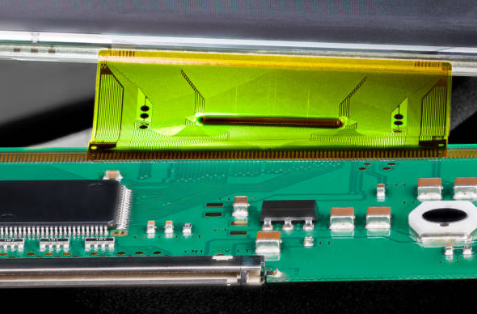
Flexible materials, glass fibers like polyimide and polyester, are usually used in various industries because of the unique features they possess as well as their versatility. Here’s an overview of each material:
- Polyimide:
- Polyimide, commonly “known” by the trade name Kapton, is the most well-known high-performance material that features outstanding heat stability, chemical resistance, and good mechanical strength.
- It is able to withstand wide temperature range (from very low to soaring high). So it is helpful to use it in such extreme environments.
- As plastic films made from polyimide can easily be flexibly bent, this flexible substrate is widely used in flexible printed circuit boards (PCBs) and also in applications such as insulating material for electrical cables, heat isolation, and cover layers.
- With its great dimensional perseverance and dielectric properties, it is perfect for devices that need excellent performance, such as in aerospace, automotive, and electronic systems.
- Polyester:
- Polyester (also known as Polyethylene terephthalate (PET)) is a commonly synthesized material with a variety of applications due to its strength, control and inexpensiveness.
- It has application as a strong substrate material for the use of flexible packaging, labels, and films due to its good tensile force, break resistance and barrier properties.
- Polyester films are additionally suitable for the manufacture of flexible printed circuit boards (PCB). It is noteworthy that polyester films present effective electrical insulation as well mechanical stability.
- Polyester fibers are widely applied in the textile industry for clothes, upholster, doors, carpets, and industrial operations because of their strength, crease resistance, and colorfastness.
Each one has special properties and benefits, and they are used widely in more areas and fields of industries and applications. These traits, as described by being very flexible and tough and likely to endure even in tough and high-performance applications of daily living, personalize their functionality.
Metal Core Materials (Aluminum, Copper)
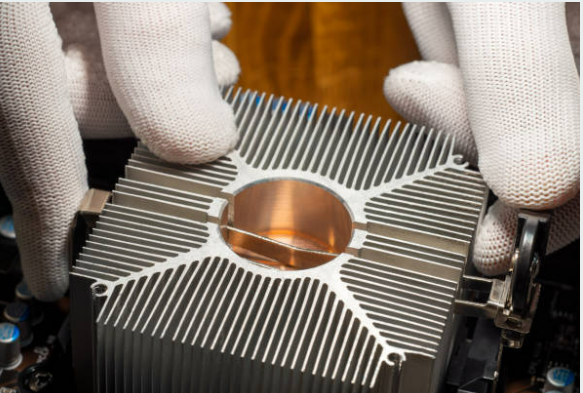
Metallic core materials like Aluminum or Copper are usually utilized as singular outer layers of Printed Circuit Boards (PCBs), especially in those applications where high electrical power is involved, such as in the case of heat conduction and heat dissipation. Here’s an overview of each material:
- Aluminum-core PCBs:
- Printed Circuit Boards (ACPCBs) have a dielectric layer and a copper layer adhered to a base layer of aluminum.
- Aluminum has very high thermal conductivity and is thus very suitable for use in cases where higher efficiencies for heat dissipation are required, such as LED lighting, power electronics, and automobile applications.
- Aluminum Core Printed Circuit Boards (ACPCBs) are light, durable, and cost-efficient, making them appropriate for high-volume production and applications where weight and cost are crucial factors.
- They are generally used in applications where minimizing the operating temperature is important to guarantee component reliability and consume less power.
- Copper-core PCBs:
- In copper-core PCBs (CCPCBs), their first layer is copper, put among the circuit and dielectric layers.
- Copper as well as high-copper alloys, including brass and bronze, offer even higher thermal conductivity than aluminum and are widely used for the production of CCPCBs where the heat dissipation rate is crucial, such as in high-power LED lighting or DC power supplies, as well as in cars where temperature stability is much needed.
- The CPCBs deliver excellent thermal response and reliability compared with common FR-4 PCBs, which are most often used where high currents or thermal expansion cycling occur.
- Dissipating heat is the primary function of heat sinks and they are commonly used in systems and applications where temperature of electronic solutions needs to be tracked. They are also an important part of electronic devices where heat dissipation is crucial to prevent overheating and to ensure the longevity, reliability and continuity of operation.
Both aluminum and copper-based heat-sinks materials offer the same advantage in terms of cooling and heating with respect to electronic performance and are therefore suitable for most high-performance applications. Whether it is aluminum or copper-core PCBs, the critical factors to be determined include thermal expansion of the application, cost consideration and technical limitations in designing.
High-Frequency Materials
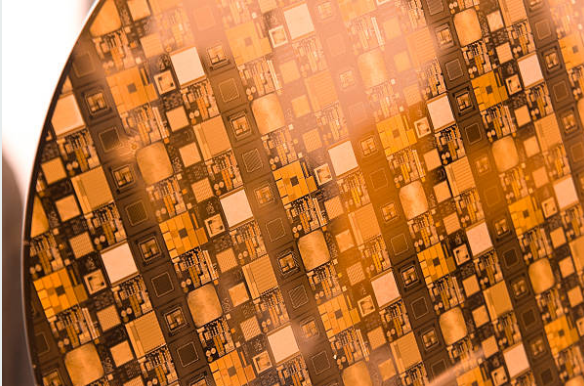
High-frequency materials is a type of high-quality substrate used in production of printed circuit board (PCB) with high radiofrequency or microwave bands, otherwise called RF or microwave. These materials include attenuators, which have low impedance mismatch and EMI at high frequencies. Here are some key characteristics of high-frequency materials:
- Low Dielectric Loss: High-frequency materials usually have low dielectric loss, meaning that they can minimize the absorption of RF or microwave signals while these signals are on the printed circuit board (PCB). This step is vital for the sake of signal integrity and attenuation reduction, which, in turn, improves the transmission quality of high-frequency signals.
- Low Dissipation Factor: High-frequency materials possess a low dissipation figure, which signifies the amount of energy dissipated in form of heat and then being wasted when the signal goes through the material. An LDFS (Low Dissipation Factor) contributes to reducing the signal distortion in the process of high-frequency signal transmission and keeps it clean.
- Uniform Electrical Properties: The high-frequency material, which is uniform in getting the electrical properties like Dk and Df, is found in the printed circuit boards (PCBs) substrate. This leads automatically to the same wave so as to ensure signal propagation and impedance matching, which are critically important in the high-frequency area.
- Temperature Stability: High-frequency materials are characterized by preserving electrical properties unvarying over a huge spectrum of temperatures, thus showing their high dependability even in extreme operating conditions. Temperature stability that is steady and uniform is the basis of those applications, which include aerospace, telecommunications, and radar systems, and they require such operating environment conditions.
- Low Moisture Absorption: High-frequency materials are super-hydrophobic, which means they absorb very little moisture, therefore maintaining their electrical performance even in high-humidity environments. This will ensure that changes in dielectric constant and loss tangent, which significantly affect the signal quality and performance, are not effected.
- Copper Cladding: The copper cladding is on both sides or just one side of the substrate material for better conductivity and to meet the demand for signal efficiency. Copper cladding is mostly optimized, especially in high-frequency applications where it is chosen to have certain thickness and surface finishes that diminish losses and improve the level of RF/microwave circuits for high performance.
Examples of high-frequency materials include:
- PTFE (Polytetrafluoroethylene) laminates, like Rogers RO4000 series and Taconic TLY series, are a conventional option in the realm of high-frequency circuits.
- This includes woven compressed glass mica laminates that are filled with ceramics like the ones in the Rogers RT/Duroid series.
- The types of laminates containing hydrocarbon ceramic, like the Isola Astra MT laminate, are developed.
Such materials are mostly employed in areas of wireless communication systems, satellite communications, radar systems, microwave antennas, and high-speed digital circuits in which signal integrity and loss are the foremost issues.
Rigid-Flex Materials
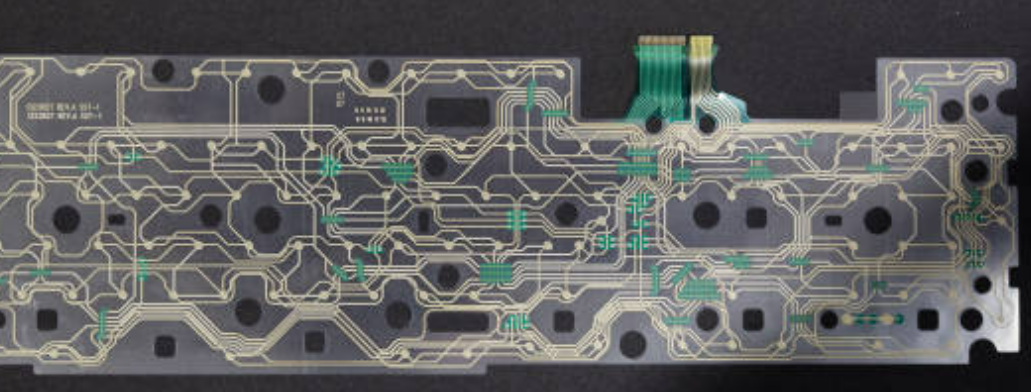
Rigid-flex materials are highly particular substrates applied for rigid-flex printed circuit boards (PCBs), which unite both rigid and flexible segments on a common plate. Through their usage, these materials make it possible to build extremely versatile and sophisticated electronic components that utilize both solid and flexible PCB designs, giving the user the user the ability to choose the design for the product. Here are some key characteristics of rigid-flex materials:
- Flexibility: Flexible substrates are developed with the ability to be flexible, bend and shape in relation to the device or enclosure in which they reside. Through this versatility, the designs of PCBs can be made compact and space-efficient, mainly where space availability is limited or in application where the PCB needs to fit the inside of non-standard or strange-shaped enclosures.
- Bend Radius: Specified bend radius of the rigid-flex boards dictates how tightly the materials can be bent without risk of cracking circuits or affecting the overall performance. The bend radius is specified by the material manufacturer and its value is based on the substrate properties for instance, thickness and composition of the material.
- Durability: Rigid-flex materials are being made to be able to resist repeated bending and flattening without failure or degradation. The motherboards are made from polyimide (flexible substrate) and FR-4 (rigid substrate) to provide mechanical strength and reliability, which are essential over the life span of the PCB.
- Adhesion: Rigid-flex boards are different in that they have adhesive layers that bond the rigid and flexible portions of the PCB together and keep them strong and firm in order not to have faulty connection. The adhesive layers are created to be strong enough to withstand temperature cycling, vibration, and other degrading environmental factors present during operation.
- Thermal Stability: These materials have strong thermal stability, allowing them to keep their electrical and mechanical functions consistent over the whole range of temperatures. This is needed for cases where the PCB is exposed to extreme temperatures or temperature variables during the operation.
- Copper Foils: Generally, solid flex materials are similar to the other PCBs in that they involve foils of copper in both the rigid and flexible parts of the PCB, This makes them conduct electricity as well as allowing the creation of complex circuits and interconnects. Conversely, copper foils are laminated on the substrate using an adhesive layer, which is then etched to create the required circuit patterns.
Examples of rigid-flex materials include:
- Polyimide laminates, including Kapton, are an example of the adhesive.
- FR-4 laminated substrates that feature polyimide or adhesive-less polyimide coverlays.
- Liquid crystal polymers (LCP) are another class of plastic substrates.
These materials are typically found in products which make use of them to connect and streamline data between devices, like in medical devices, aerospace and defense systems, automotive electronics and consumer electronics.
PCB MATERIAL COMPOSITION
PCB (Printed Circuit Board) components are formed by several layers flex circuits, which fulfill particular functions and performance of the entire board. The typical composition of a multi-layer PCBs includes multiple layers:
Substrate Layer
The first layer of the PCB, known as substrate material or base layer board, offers mechanical strength and electrical insulation. Coming to the substrate layer board next part, it is fabricated with FR-4. FR-4 is a non-conductive material that is made from a mixture of fiberglass and epoxy resin and provides with electrical insulation properties as well as mechanical strength.
Copper Foil Layers
Copper foils in thin copper layers which are attached to the substrate in order to create the conducting patterns and pads of copper planes the circuit. They are chemically reacted to form the pattern of copper layers, which enable the electrical current to run freely between the components.
Dielectric Material
High-dielectric-constant materials like epoxy resin or polyimide will serve as insulators by separating the copper layer from the conductive layer. This consequently inhibits the occurrence of short circuits and ensures convenient component placement with respect to each other.
Solder Mask
A unit of solder mask is used to cover each outer layer of conductive traces of copper in order to keep them moist, dusty and corrosion-free. Green is the solder mask filament but other colors are also available.
Silkscreen
A first silkscreen layer, which is usually white in color, is applied as a thin layer over the molten solder and mask, with such parts to be labeled, identified, or marked for processing and identification. This silkscreen layer is important to assist technicians and engineers during the PCB manufacturing and troubleshooting processes.
Surface Finish
To protect the exposed copper pads from oxidation and the process of soldering components on, a surface finish is applied. Generally, the surface finishes of most of the copper-clad printed circuit boards are HASL (Hot Air Solder Leveling), ENIG (Electroless Nickel Immersion Gold) or OSP (Organic Solderability Preservatives).
Additional Layers (for Multilayer PCBs)
Around multi-layer boards, there are more conducting layers made of substrate, copper foils, and dielectric materials which are laminated together in advanced way that results into a network of complex and interlaced circuits. The extra-conductive layers of routing molecules provide for higher density and enhanced signal integrity in complex electronic systems and circuits.
Generally, PCB substrate materials are built to meet that purpose by providing electronic and electrical component mounting platforms and by creating functional electronic circuits for a wide range of applications.
Most Common Types of Materials Used for PCB Manufacturing
These are the types of materials used for the Printed circuit boards manufacturing process:
FR-4
This is the kind of material that is mostly used in the PCB manufacturing process. It is a glass-reinforced epoxy resin lique that exhibits good electrical insulation and mechanical strength properties.
FR-1
Same as FR-4, this paper-based laminate material belongs to FR-1, which is rated as a low-cated property. Besides, it is favorable for making simple PCBs that are single-sided circuit boards or applications with relatively high temperatures and cheaper prices.
Polyimide
Outstanding high-temperature resistance of polyimide substrate materials allows their use in projects with demanding applications and harsh environmental conditions.
CEM-1
One additional laminate that is made of paper is Composite Epoxy Material 1, or CEM-1, which has electrical and mechanical capabilities that are greater than FR-1. It is usually implemented when making single-sided PCBs or low-cost products. WhatsApp
Metal Core
Metal-core PCBs contain thin metal (generally aluminum or copper) as inner layer of the substrate, which successfully dissipate heat better than the traditional FR-4 or CEM-1 materials. They are necessary for motor vehicles that use large amounts of power or those that have LED lights.
Rogers
At one of Rogers’ plants that manufactures a selection of sophisticated radio frequency and microwave laminates, Rogers Corporation produces them. Those substrate materials have a low electric loss factor, high electrical performance and tight control of impedance.
PTFE
Polytetrafluoroethylene (PTFE) is considered as a high VI (voltage insulation or impedance) material, which is a great responder in regards to its low ±5% values of the dielectric constant and high frequency, up to 100 GHz. PTFE materials are most frequently used by PCB companies, which use them in high-frequency RF/microwave printed circuit boards. To enhance readability, try to improve sentence structure and eliminate ambiguity in the given sentence.
Ceramic
Ceramic materials display exceptionally good thermal properties, large electrical resistance, and superior mechanical characteristics. When high power and high temperature requirements are imposed, performance and reliability are the top priority.
SELECTING PCB BOARD MATERIALS
Selecting proper materials for a PCB (printed circuit board) is so important to ensure the adequate performance, reliability and longevity of the the circuit board materials.
Key Considerations When Choosing PCB Materials
- Thermal properties: The circuit board substance should have a high thermal conductivity to disperse the heat produced by the components as well as the PCB itself. These elements, aluminum and copper, can serve as good reflectors for several reasons, such as optimal thermal conductivity.
- Electrical properties: The PCB substrate must exhibit proper insulation to ensure that it does not give up electrically. FR-4 (fiberglass epoxy) is among the most used materials for panels because of their good electrical insulation.
- Signal integrity: PCB substrate needed to have a low dielectric constant and a low dissipation factor in order to maintain high speed for digital circuits. Materials such as Teflon or Rogers are generally employed because of their low dielectric loss.
- Mechanical properties: During the assembly process, the PCB material needs to have good strength and rigidity so that it can tolerate the mechanical stress. Afterward, the inhabitants need to ensure it has the correct strength and rigidity to tackle the mechanical stresses. FR-4 is usually a material that is widely chosen for its good mechanical properties, like moderate dielectric constant, high tensile strength, and excellent frequency range of operation.
- Cost: We have calculated the cost of the PCB material to make sure that the overall cost associated with the PCB design is affordable. Many options are available at different prices levels that suit the different requirements and budget constraints, so it’s vital to choose the material that works best for the budget and the required performance.
Generally, the selection of PCB board materials depends on application specification criteria, which will cover things including temperature, dielectric value, signal integrity, mechanical properties, and cost. In addition to component heat resistance copper thickness, and density, you must consider the production process and assembly procedures involved in PCB choice.
Does Printed Circuit Boards Material Selections Affect Cost?
Absolutely, the way selected materials for printed circuit boards (PCBs) are selected will also determine the unit product cost. Characteristically, materials have unique properties and traits that influence the efficiency, trustworthiness and reliability of the PCB. A superior and higher-quality material could cost more; however, it can also deliver better performance, reliability, and a longer lifespan of the PCB. Firstly, the low cost may come at the cost of quality. Poor-quality components are more likely to break down, fail and have a shorter lifespan. In the end, these cost more when it comes to the price of repairs or replacements. Furthermore, the state of the market, including the supply and demand of the materials, can also dictate the price range of the printed circuit boards. Consequently, this indicates that materials are the foundation of PCBs.
PCB MATERIALS AND INDUSTRY APPLICATIONS
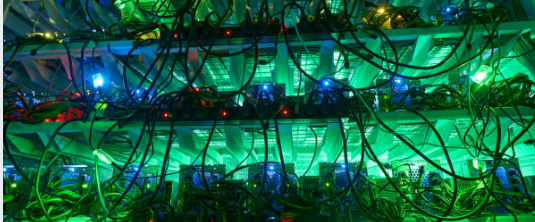
PCB (Printed Circuit Board) materials are an important part of different industries and are used in order to connect different electronic components and build functioning circuits. There are different PCB materials taken into consideration according to the function and the anticipated uses of composite material in each industry.
Here’s a look at some common PCB substrate and their industry applications:
- FR-4 (Fiberglass-Reinforced Epoxy):
- Consumer Electronics: This type of material is featured in consumer electronics, including smartphones, tablets, laptops, and television sets, because of its cost-effectiveness, good insulation and good electricity conductivity.
- Automotive: FR-4 PCBs also gain popularity in the automotive electronics area, especially for the ECU, dashboard display, and infotainment system. Manufacturing requirements depend on their high reliability and durability.
- Industrial Equipment: The FR-4 board is a product for industrial equipment, of which the essential functions are the control system, motor drives, and electrical supply. Therefore, all electronic devices require integrity and thermal expansion stability.
- Flexible Materials (Polyimide, Polyester):
- Wearable Electronics: Flexible PCB materials, polyimide and polyester, are suitable for smart devices like fitness trackers, smartwatches, and medical sensors due to their malleable nature, which is beneficial for the production of comfortable and adjustable designs.
- Aerospace: Aerospace organizations commonly employ flexible PCBs in avionics, satellites, and drones that have the advantages of weightless, space-saving, and vibration-resistant features.
- Metal Core Materials (Aluminum, Copper):
- LED Lighting: The application of metal-core PCBs like aluminium in LED lighting is done for the reason that such PCBs have very high thermal conductivity. This is very favourable for effective heat dissipation and a longer LED lifespan.
- Power Electronics: The metal core PCB materials are mainly composed of copper foil, which are widely used in the areas of power electronics such as motor drives, power converters, and renewable energy systems for high power handling and thermal management.
- High-Frequency Materials:
- Telecommunications: A wide range of frequencies are encountered in telecommunications infrastructure, for instance, base stations and antennas. Therefore, high-frequency PCB material is used to keep signal integrity and loss low at high frequencies. It includes, but is not limited to, base stations, antennas, and satellite communication systems.
- Radar and Microwave Systems: Industries like defense and aerospace make use of high-frequency laminate materials for airborne radars, microwave communications devices, and sensor receivers, where the accuracy of signal transmission and reception is definitely vital.
- Rigid-Flex Materials:
- Medical Devices: Rigid-flex PCBs are used for internal applications in medical devices like implantable devices (internal defibrillators and the like), patient monitoring systems, as well as diagnostic equipment. The advantages of the compact design and reliability of the joints between the inflexible and flexible parts are among the main reasons for their choice.
- Automotive Control Systems: Autonomous and control systems can utilize rigid-flex PCBs in control modules, sensors, and safety systems, benefiting from space-saving and ruggedness in confined areas.
The application of these PCB materials to various industries demonstrates how the industry can serve different customers who need diverse things from the products they are developing. This will lead to the creation of creative electronic devices and systems in modern times.
Conclusion
To sum up, PCB boards are electronic devices’ building blocks, used for assembling electronic components and creating effective circuits by providing a foundation for these components. Such a wide selection of PCB materials consists of the very common FR-4 of consumer electronics as well as more specialized materials like flexible substrates for wearables and high-frequency materials for telecom. Each industry has its own needs and challenges that are catered to by this unique array of materials. Either opting for management in LEDs with metal core substrate materials or retaining the signal authenticity in radars with high-frequency substrates, the correct PCB materials are the ultimate requirement for attaining the maximum at the lowest price for the various electronic designs. With technology advancing, invention on PCB materials is foreseen to be the governing platform for new innovations, thereby providing an edge for the development of more intelligent and power-efficient electronic devices in the future.

